 Smartphones have opened the door to a world of possibilities, further than we could have ever imagined. While they are commonly used to communicate with others, keep up with social media, and perform simple tasks, smartphones have innovations that allow accessibility and functionality to the blind and visually impaired. With the help of a smartphone, smartwatch, or tablet, the “blind” or visually impaired can virtually “see” and become more independent.
Smartphones have opened the door to a world of possibilities, further than we could have ever imagined. While they are commonly used to communicate with others, keep up with social media, and perform simple tasks, smartphones have innovations that allow accessibility and functionality to the blind and visually impaired. With the help of a smartphone, smartwatch, or tablet, the “blind” or visually impaired can virtually “see” and become more independent.
The essential built-in apps—meaning the apps that come pre-installed on your device—that make a smartphone a smartphone are the phone, contacts, calendar, and text messaging apps. There is also a web browser—Safari for iOS and Chrome for Android and an app you can use to access the store where you can buy and download more apps. The store is called “App Store,” on the iPhone and “Play Store” on Android devices. Because built-in apps are all quite accessible, using these apps is a great way to perfect your skills with your device’s built-in touch-screen reader, which is called VoiceOver for iPhones and TalkBack for Android.
Believe it or not, your smartphone can help you accomplish tasks you may think you can’t do without vision. Listed below are smartphone apps that essentially work like an extra pair of eyes.
LookTel: The Money Identifier Mobile App
LookTel Money Reader instantly recognizes currency and speaks the denomination, enabling people experiencing visual impairments or blindness to quickly and easily identify and count bills. [Learn More]
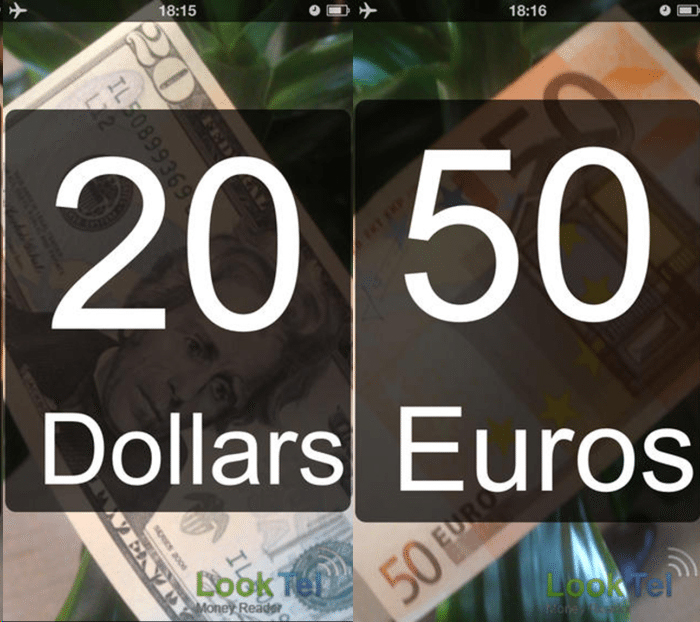
TapTapSee: Identify Objects Through Photos
TapTapSee is designed to help the blind and visually impaired identify objects they encounter in their daily lives. Simply double tap the screen and take a photo of anything, at any angle. You’ll hear the app speak the identification back to you (Note: Requires VoiceOver to be turned on). [Learn More]

KNFB Reader App: Reads Virtually Any Text Aloud
The KNFB Reader converts printed text into high-quality speech to provide accurate, fast, and efficient access to both single and multiple page documents with the tap of a button on the iPhone. [Learn More]
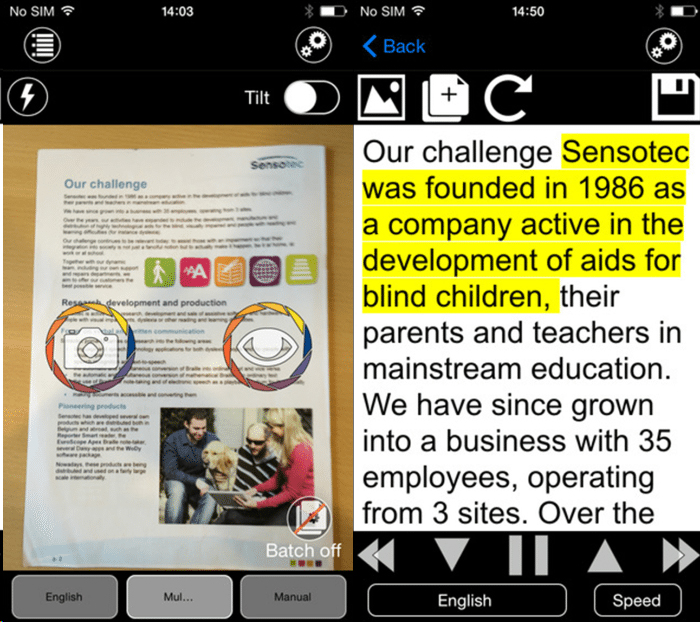
Color ID Free: Discovers the Names of the Colors Around You
Color ID Free uses the camera on your iPhone to speak the names of colors in real-time. [Learn More]
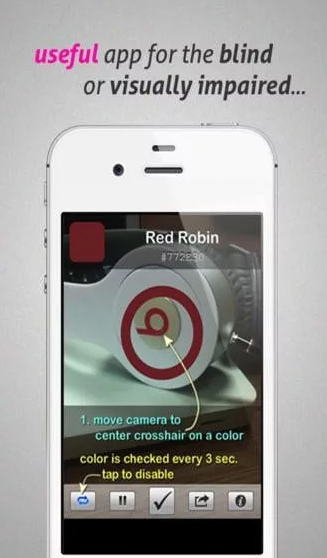
Blindsquare: Blind navigation – Changes lives
BlindSquare is the World’s Most Popular accessible GPS-app developed for the blind and visually impaired. It describes the environment, announces points of interest and street intersections as you travel. [Learn More]

Seeing AI: Talking camera for the blind
Seeing AI is a free app that narrates the world around you. Designed for the blind and low vision community, this ongoing research project harnesses the power of AI to open up the visual world and describe nearby people, text and objects. Optimized for use with VoiceOver, the app enables you to recognize: Short Text – Speaks text as soon as it appears in front of the camera. [Learn More]

Talking Calculator: Reads answers, entered numbers and formulas aloud.
Talking Calculator is designed for a wide range of users, this calculator has large colorful buttons, optional high contrast, full VoiceOver support, and unique to this calculator; the option to use speech for answers, button names and formulas! [Learn More]

Be My Eyes: The One Everyone’s Been Talking About- People Helping People in Real-Time
Be My Eyes – Be the eyes for a blind person in need of help remotely through a live video connection if you are sighted or be assisted by the network of sighted users if you are blind. [Learn More]

We’ve listed a few of what we consider the must-have essential apps for your smartphone although we’ve barely scratched the surface.
Your phone can include any number of screens filled with apps. Although, you will spend most of your time on your Home screen—the first screen to appear when you power on your smartphone. Pick and try your favorites from the apps we’ve discussed here, and you’ll be astonished by just how useful that smartphone can be.


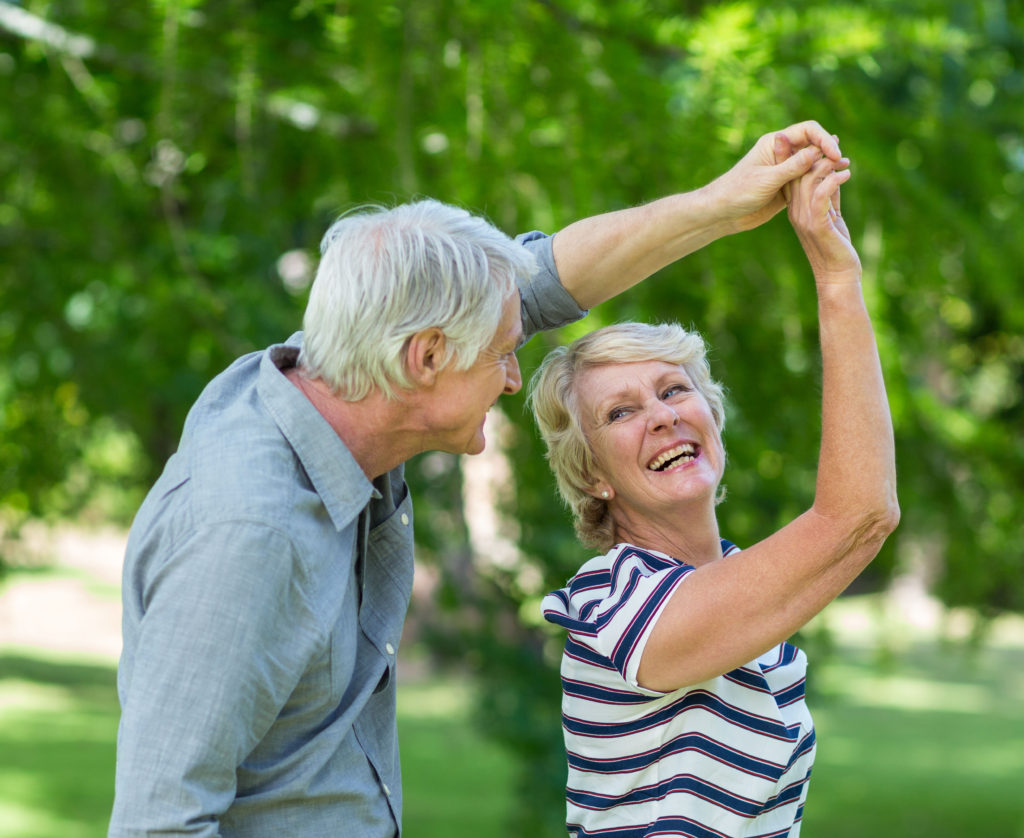 Healthy Aging Month is an annual health observance designed to focus national attention on the positive aspects of growing older. Aging is a process that brings many changes. Vision loss and blindness, however, do not have to be one of them. There are several simple steps you can take to help keep your eyes healthy for the rest of your life.
Healthy Aging Month is an annual health observance designed to focus national attention on the positive aspects of growing older. Aging is a process that brings many changes. Vision loss and blindness, however, do not have to be one of them. There are several simple steps you can take to help keep your eyes healthy for the rest of your life.

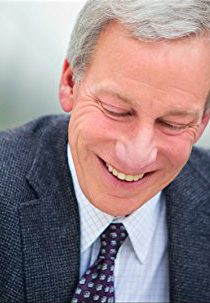 Tom Sullivan
Tom Sullivan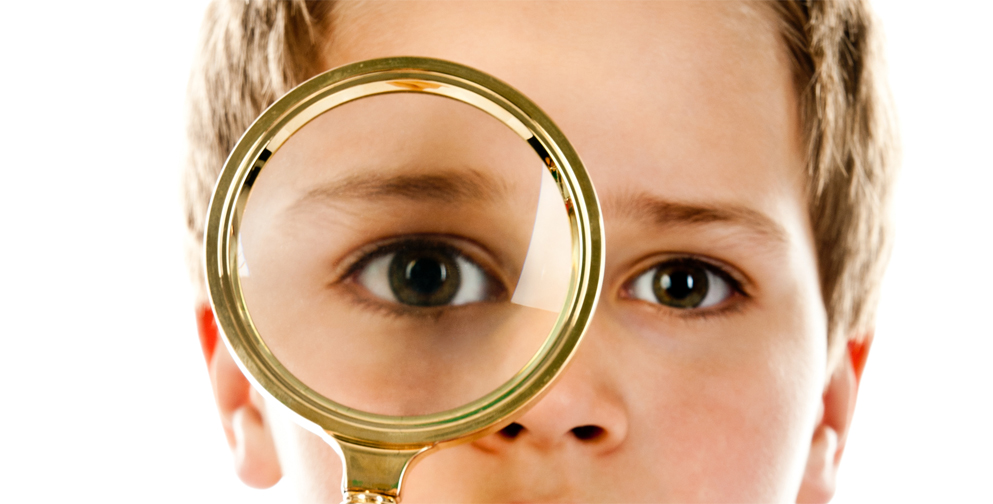 When you think of cancer, most of us do not think about the eye or vision. Though rare, cancer can start inside or outside of the eye. If cancer starts inside the eyeball it’s called intraocular and if it starts outside the eye (eyelid or in the eye socket) then it’s called extraocular tumor. It can occur in both children and adults. Most major eye centers have specialists who are trained in the diagnosis and treatment of eye cancers.
When you think of cancer, most of us do not think about the eye or vision. Though rare, cancer can start inside or outside of the eye. If cancer starts inside the eyeball it’s called intraocular and if it starts outside the eye (eyelid or in the eye socket) then it’s called extraocular tumor. It can occur in both children and adults. Most major eye centers have specialists who are trained in the diagnosis and treatment of eye cancers. At the later stage of this cancer, the only one way to survive is to remove the eyeball (enucleation). Like many of other types of cancer, retinoblastoma has a genetic component so genetic testing needs to be done. The tumor begins with the RB1 gene mutation that stimulates retinal cells to develop into a tumor called a retinoblastoma. The RB1 mutation can be inherited from the parents, but in some cases it is sporadic and not inherited. There are various treatments such as surgery, chemotherapy, radiotherapy etc. to cure retinoblastoma cancer. Rarely it can spread beyond the eye.
At the later stage of this cancer, the only one way to survive is to remove the eyeball (enucleation). Like many of other types of cancer, retinoblastoma has a genetic component so genetic testing needs to be done. The tumor begins with the RB1 gene mutation that stimulates retinal cells to develop into a tumor called a retinoblastoma. The RB1 mutation can be inherited from the parents, but in some cases it is sporadic and not inherited. There are various treatments such as surgery, chemotherapy, radiotherapy etc. to cure retinoblastoma cancer. Rarely it can spread beyond the eye. 

 UV Protection – Sunglasses for children should block 100% of UV radiation as well as between 75 – 90% of visible light. Any sunglasses you buy should have this information provided in the packaging
UV Protection – Sunglasses for children should block 100% of UV radiation as well as between 75 – 90% of visible light. Any sunglasses you buy should have this information provided in the packaging  At the Discovery Eye Foundation (DEF), we are committed to supporting research that we believe will make the treatment of many forms of vision loss far more predictable and successful.
At the Discovery Eye Foundation (DEF), we are committed to supporting research that we believe will make the treatment of many forms of vision loss far more predictable and successful. 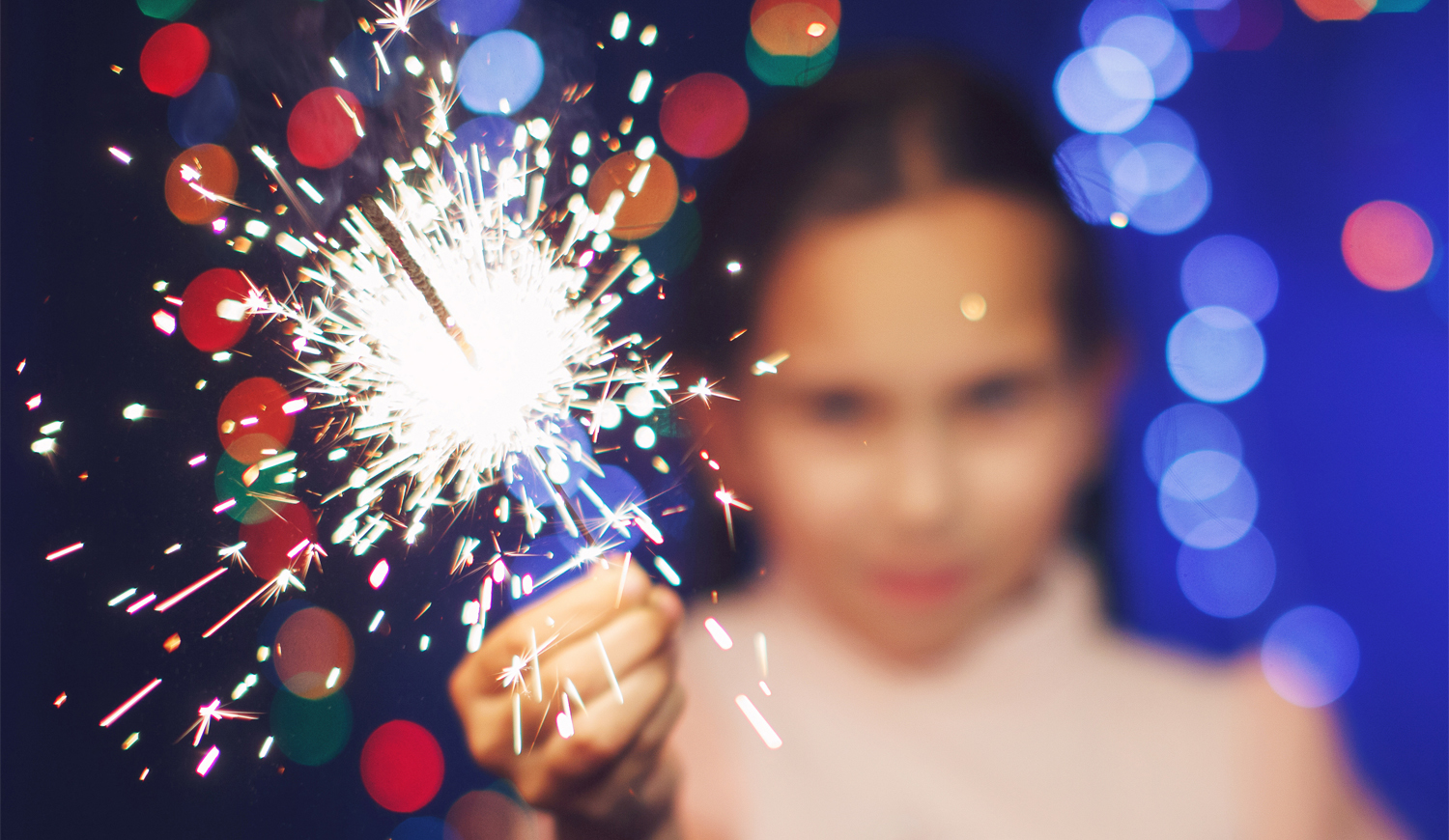 FIREWORK & EYE SAFETY:
FIREWORK & EYE SAFETY: 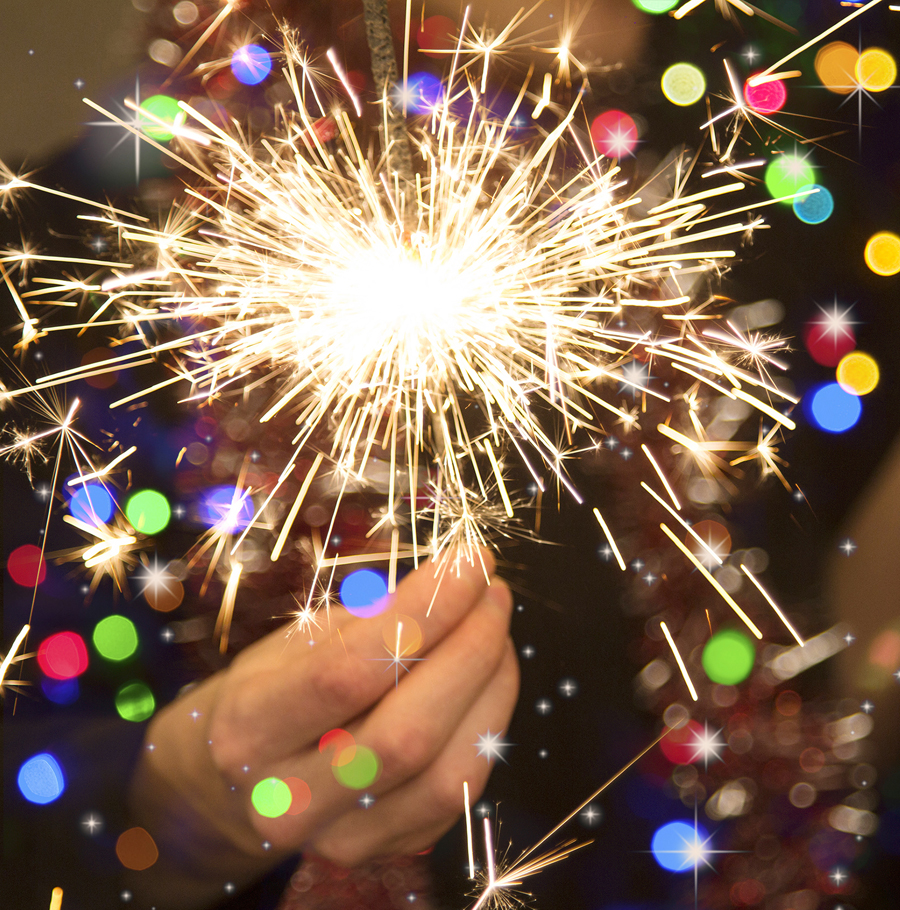 Even sparklers can be dangerous, as they burn at more than 2,000 degrees Fahrenheit. Sparklers were responsible for 1,200
Even sparklers can be dangerous, as they burn at more than 2,000 degrees Fahrenheit. Sparklers were responsible for 1,200 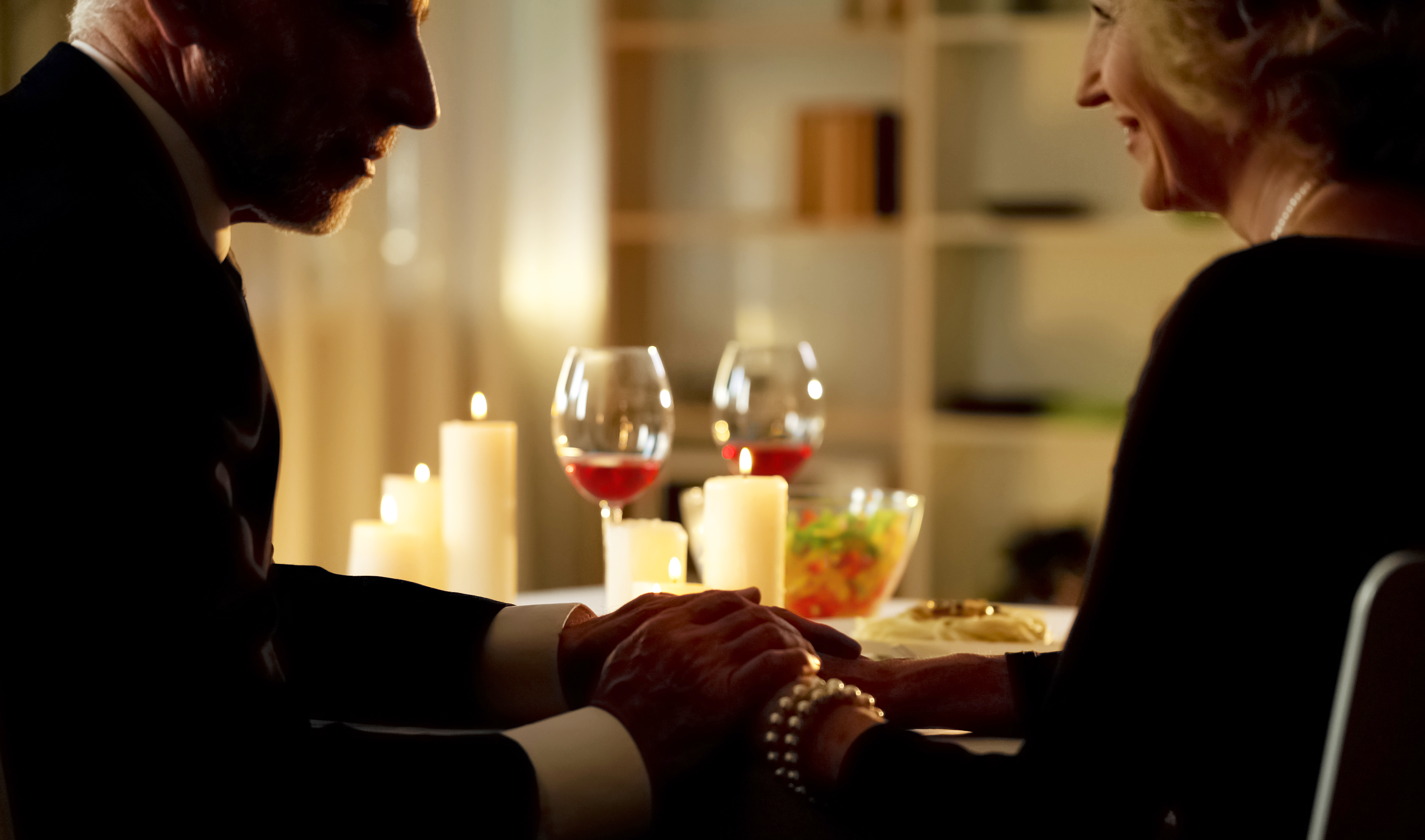 So make sure that you take a look – a real look at the people you love and realize the importance of what it means to see. At Discovery Eye, we are committed with your help to finding the answers that will allow people to enjoy the vision that makes every day and every anniversary worth living.
So make sure that you take a look – a real look at the people you love and realize the importance of what it means to see. At Discovery Eye, we are committed with your help to finding the answers that will allow people to enjoy the vision that makes every day and every anniversary worth living. 
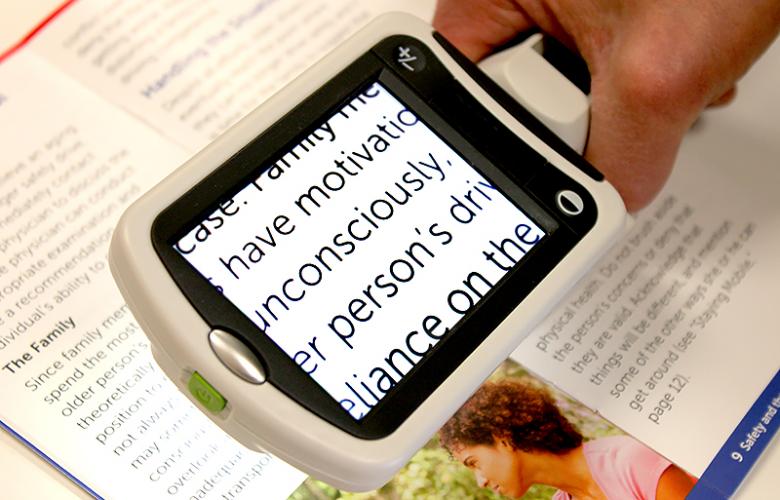 Portable magnifiers and lighted magnifiers- offer magnified reading on the go. Perfect for menus, shopping lists, label reading, and more, portable magnifiers can fit in your pocket, purse, or be worn on the belt for quick, easy use.
Portable magnifiers and lighted magnifiers- offer magnified reading on the go. Perfect for menus, shopping lists, label reading, and more, portable magnifiers can fit in your pocket, purse, or be worn on the belt for quick, easy use. Wearable magnifiers – wearable technology is the future for those with low vision who live an active lifestyle. Wearable options make it possible to see and take part in everyday tasks, such as reading and recognizing faces.
Wearable magnifiers – wearable technology is the future for those with low vision who live an active lifestyle. Wearable options make it possible to see and take part in everyday tasks, such as reading and recognizing faces.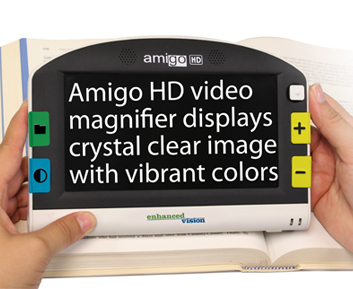 Transportable magnification screens– are perfect for close up viewing as well as distance viewing. These great viewers offer great flexibility, from watching TV to using the mirror image feature for self-viewing. There are APPS for smart phones that can be used to magnify reading material.
Transportable magnification screens– are perfect for close up viewing as well as distance viewing. These great viewers offer great flexibility, from watching TV to using the mirror image feature for self-viewing. There are APPS for smart phones that can be used to magnify reading material. Desktop devices for reading books, bills or letters – these have large, bright screens. A reading table offers visual aid for reading books, optional computer connectivity and more. This family of portable magnification units offers up to 75x magnification.
Desktop devices for reading books, bills or letters – these have large, bright screens. A reading table offers visual aid for reading books, optional computer connectivity and more. This family of portable magnification units offers up to 75x magnification.